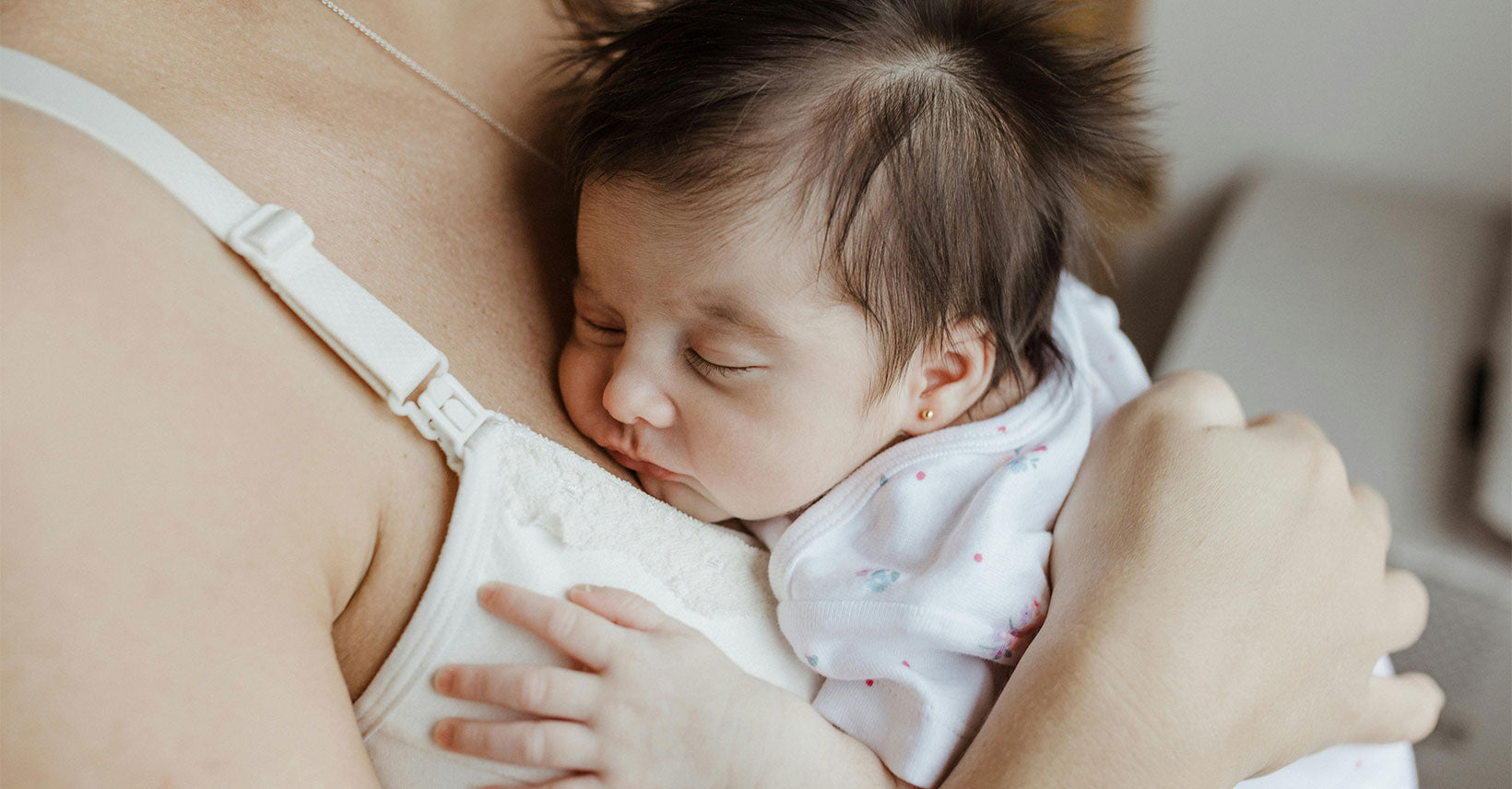


It's not uncommon for new parents to find themselves in a situation where their baby only wants to sleep when they're being held. This can be exhausting, but it's important to remember that this phase is normal for many infants. Babies seek comfort and familiarity, and the scent, sound, and movement of their parents can be incredibly soothing. While it may feel challenging, there are practical steps in today’s blog you can take to help your baby learn to sleep independently. Understanding your baby's needs and gradually introducing new sleep associations can make a significant difference.
Here are some reasons why a baby might only sleep when being held:
Babies feel safe and comfortable when close to their parents, as they can hear the parent's heartbeat, which reminds them of the womb.
Newborns have reflexes like the Moro reflex, which can cause them to wake up when placed down, making them prefer being held.
Babies have shorter and lighter sleep cycles, making them more likely to wake up and seek comfort.
The baby might prefer the comfort of being held over an uncomfortable sleep environment that is too hot, cold, or unfamiliar.
If the baby associates sleep with being held, they might expect this routine and resist sleeping independently.
Issues like reflux or discomfort might make the baby more comfortable when held.
Growth spurts or developmental changes can temporarily disrupt sleep patterns.
In some cultures, holding the baby to sleep is common, influencing parental habits.
Rarely, underlying medical issues might cause the baby to prefer being held.
Even young babies can experience anxiety when separated from their parents.
Here’s a step-by-step guide for parents navigating this common challenge:
Always place the baby on their back in a crib or bassinet with a firm mattress and no loose bedding, per AAP guidelines. This reduces SIDS risk, even if the baby resists at first.
Use a heating pad (removed before placing the baby down) or pre-warm the crib with a blanket to mimic the warmth of being held. Cold surfaces can startle babies awake.
Start by holding the baby until they’re drowsy but not fully asleep, then gently transfer them to the crib. Repeat consistently to build new sleep associations.
Swaddling can mimic the snug feeling of being held. Stop swaddling once the baby shows signs of rolling (around 2-5 months) and switch to a wearable sleep sack.
A steady sound machine (set to 50-60 decibels) can replicate the sounds the baby heard in the womb, creating a calming environment.
Offering a pacifier at sleep times can satisfy the baby’s need to suck for comfort, which may help them settle without being held.
Use a soft carrier or sling during the day to keep the baby close while freeing up the parent’s hands. This may reduce clinginess during naps.
Have another caregiver (partner, family member) step in occasionally. Babies sometimes accept new sleep routines more easily with someone who smells and feels different.
Rule out issues like reflux, gas, or allergies with a pediatrician. Some babies cling to being held because upright positions ease physical discomfort.
Consistency helps. A simple routine (e.g., bath, book, lullaby) signals it’s sleep time, even if the baby initially protests.
For babies over 4-6 months, take some methods to encourage independent sleep. Always consult a pediatrician first.
This phase often resolves as babies grow. Most infants learn to sleep independently by 6-12 months, though timelines vary.
If the pattern persists or impacts parental mental health, a pediatric sleep consultant or doctor can offer tailored strategies.
Here are some practical tips for helping newborns sleep in a bassinet:
A simple routine, like feeding, changing, and swaddling, can signal to the baby that it’s time to sleep.
The bassinet should meet current safety standards, have a firm mattress, and be free of loose bedding, pillows, or toys.
Swaddling can help newborns feel secure and mimic the snug feeling of being in the womb.
A calm environment with low lighting can help the baby relax and fall asleep more easily.
Always put the baby on their back to sleep, as this is the safest position to reduce the risk of SIDS (Sudden Infant Death Syndrome).
Gentle background noise, like a white noise machine, can help drown out sudden noises and soothe the baby.
Look for signs that the baby is tired, such as yawning, rubbing eyes, or becoming fussy, and put them in the bassinet before they become overtired.
Having the bassinet nearby makes it easier to comfort the baby during the night and helps with nighttime feedings.
Keep activities calm and quiet in the hour leading up to bedtime to help the baby wind down.
Newborns often take time to adjust to sleeping in a bassinet, so it’s important to stay consistent with the routine and give them time to adapt.
These tips are based on general recommendations from pediatricians and sleep experts. Every baby is different, so it’s okay to adjust as needed to find what works best for the family.
In conclusion, it’s completely normal for babies to prefer sleeping with their parents—it’s warm, comforting, and familiar. However, for the safety and well-being of both the baby and the parent, it’s important to gradually encourage the baby to sleep in their own space, like a bassinet or crib. Parents can start by creating a consistent sleep routine, using swaddles or sleep sacks, and introducing the bassinet during naps. It’s also helpful to make the bassinet feel cozy by warming it slightly or using a shirt with the parent’s scent. While the process may take time and patience, small steps can make a big difference. Remember, every baby is different, and it’s okay to seek advice from a pediatrician if concerns arise. With consistency and gentle encouragement, most babies will eventually adjust to sleeping on their own.

Lily Hou
An expert in sleep sack design, is a valued contributor to Kaiya Baby's blog. With a strong background in baby sleep bags and maternal care, she is highly regarded for her professionalism. Lily prioritizes baby comfort and safety in her designs, using high-quality materials. Her insightful articles on sleep bags have been featured in reputable publications and have gained a significant readership. Trust Lily to help you create a comfortable and safe sleep environment for your baby, backed by her proven track record in the industry.
Leave a comment
This site is protected by hCaptcha and the hCaptcha Privacy Policy and Terms of Service apply.